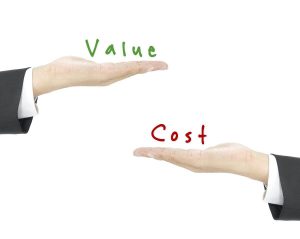 It is payday and you see your paycheck hit your bank account just in time to pay your student loans. How depressing.
It is payday and you see your paycheck hit your bank account just in time to pay your student loans. How depressing.
Paying your student loans may seem like it will last forever, but there are ways improve your repayment plan and pay off your loans faster.
Pay more than the minimum payment
This is one of the fastest ways to relieve your student loan debt. These days, most payments are done online. You can simply go online each month and pay your minimum payment, plus an additional payment. This additional payment can be whatever amount you feel comfortable paying at that time. Some months you may want to make a larger additional payment than other months. For instance, in a month where you get a bonus or a money gift, you may want to put this “found money” towards your student loans.
It is important to ensure that all extra payments are applied to principal and not the next month’s minimum payment. Some lenders may require a written letter specifying that any additional payments made are applied to principal of the loan. Other lenders may have an option online when a payment is made to categorize the extra payment towards principal. By doing this, you can reduce the interest on your loans. Keep in mind that most lenders reduce your interest rate by setting up automatic payments. You should also always pay towards your highest interest loans first as interest accrues faster on these loans.
Consolidate and refinance your loans
Interest rates on student loans can vary from 4% to 9%. If you’re like the average graduate, with three to six different loans with differing interest rates, and you are a good candidate refinancing at a lower interest rate. By consolidating, you also free yourself of the burden of making multiple monthly payments. Your consolidated loan will have one monthly payment.
This approach is not for everyone. You would only want to refinance if you can reduce your interest rates. Right now, refinancing rates on student loans are as low as 3%. Banks that offer student loan refinancing and relief include NerdWallet, Sofi, and Citizens Bank. Each bank and lender offer different programs and individualized rates, which are usually based on credit history and annual income.
Student loan interest deduction
Don’t wait to pay your student loans. If you are in loan deferment, a grace period, or in school, make payments sooner. During these periods where you are not paying your loans, interest is accruing which increases your overall loan obligation.
Some good news: the IRS offers a student loan interest deduction of up to $2,500 per year. Keep in mind that you may not be able to deduct the full $2,500, as this deduction phases out between $65,000 and $80,000 for a single taxpayer, and $130,000 and $160,000 for a married filing jointly taxpayer.
When filing your taxes, there is no need to look through your loan statements to calculate the interest paid. Your lender will provide you with Form 1098-E, which will show the total student loan interest paid in the current year. You will receive one form for each loan. If you are married, you can also deduct student loan interest paid by your spouse if you file a joint tax return. The only requirement is that you must be legally obligated to repay the loan. This means that you or your spouse must be the responsible party for the loan.
We’ve got your back
It is important to tackle student loans early in your career. By doing so, you will improve your credit, become student loan debt-free, and start saving for your future.
Lance Aligo, CPA, MSA, is a senior accountant at KRS CPAs, LLC, located in Paramus, NJ. You can reach him at laligo@krscpas.com or 201-655-7411.

 It is payday and you see your paycheck hit your bank account just in time to pay your student loans. How depressing.
It is payday and you see your paycheck hit your bank account just in time to pay your student loans. How depressing. They describe your company’s financial strengths and weaknesses and typically contain the following:
They describe your company’s financial strengths and weaknesses and typically contain the following:
 How to prepare a budget projection
How to prepare a budget projection




 There are many ways to obtain payment processors. For example, they can be found through banks, online providers and companies such as PayPal. They all have different rates. Some may require contracts or mandatory leasing of their equipment (credit card machine), so it is very important that you choose one that will work best for your company’s needs.
There are many ways to obtain payment processors. For example, they can be found through banks, online providers and companies such as PayPal. They all have different rates. Some may require contracts or mandatory leasing of their equipment (credit card machine), so it is very important that you choose one that will work best for your company’s needs. What is a Phantom Expense?
What is a Phantom Expense? Depending upon the version purchased, these packages will offer the user the ability to perform basic bookkeeping functions such as
Depending upon the version purchased, these packages will offer the user the ability to perform basic bookkeeping functions such as For many small businesses and startups, managing their cash flow is a continual challenge. Questions that come up often are:
For many small businesses and startups, managing their cash flow is a continual challenge. Questions that come up often are:
